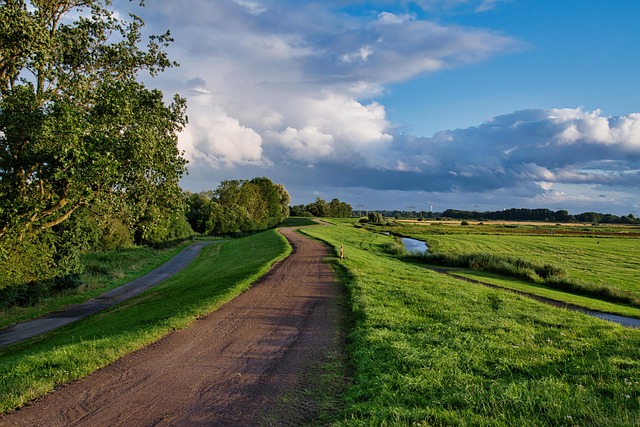
Sandy Path A Digital Detox Journey Between Tech and Humanity
In the quiet rush of modern life, a path that seems almost impossible to tread is one that does not glow with screens, that does not buzz with notifications, and that does not call for constant connectivity. It is a path that winds through open fields, along riverbanks, beneath ancient trees, and across gentle dunes. It is a sandy path, not in the literal sense of sand underfoot, but in the sense of a path that is unmarked, untraveled by the digital footsteps of our phones, and paved with moments of stillness and presence.
The Call of the Digital Wilderness
For many of us, the hum of technology has become the background soundtrack of every activity. Work, meals, commutes, even moments of reflection are punctuated by the vibration of a device. Yet there is a growing awareness that this constant connectivity is not a neutral backdrop; it shapes our moods, our relationships, and our sense of self. The idea of a sandy path is therefore a call to reclaim the spaces where we can reconnect with the natural rhythms of life without the interference of digital noise.
- Reduced anxiety and stress
- Improved sleep quality
- Greater capacity for mindful observation
- Enhanced interpersonal connection
What Is a Digital Detox?
A digital detox is not simply a period of time when one abstains from screens. It is a conscious practice of reorienting one’s attention to the present moment, to sensations, to the voices of others, and to the subtle cues of the environment. The goal is to break the habitual pattern of mindless scrolling and to create space for intentional experiences. By walking a sandy path—whether literally across sandy dunes or figuratively across a landscape of mindful practice—individuals learn to let go of the endless stream of notifications and embrace the quiet.
“The sand between our toes is a reminder that we do not have to be constantly scrolling to feel grounded.” — Anonymous
Designing a Personal Sandy Path
To embark on a digital detox, begin by selecting a location that feels inviting yet challenging enough to test your resolve. It might be a local park, a hiking trail, a beach, or even a quiet corner of your own backyard. The key is to find a place where the presence of technology is minimal or can be deliberately ignored. From there, structure your day so that each activity is performed with full attention.
- Morning Start: Begin with a short meditation or breathwork session before you even check your phone.
- Meal Time: Eat in silence, savor each bite, and talk only to the people around you.
- Physical Activity: Go for a walk or a run, paying close attention to the rhythm of your steps and the sensations in your body.
- Reflection: End the day with a journal entry, noting what moments felt most connected and what triggers led you back to your device.
Challenges Along the Sandy Path
Leaving the digital world behind is not without its hurdles. Social pressure, work obligations, and the ingrained habit of checking one’s phone at every pause can make the journey feel like a lonely trek. It is useful to anticipate these moments and have a set of coping strategies ready.
- Keep your phone in another room.
- Use a traditional alarm clock.
- Set clear boundaries with colleagues and family.
- Replace the urge to scroll with a physical activity like stretching or walking.
The Science Behind the Quiet
Research in cognitive neuroscience has shown that prolonged exposure to digital stimuli can overload the brain’s attentional systems. This overload manifests as difficulty focusing, reduced creativity, and increased susceptibility to stress. By stepping onto a sandy path, you give your brain the chance to reset. The slow, repetitive act of walking, coupled with sensory input from nature—birdsong, rustling leaves, the feel of wind—stimulates the parasympathetic nervous system, encouraging relaxation and introspection.
Stories of Transformation
Consider the case of a freelance graphic designer who, after years of constant email notifications, experienced chronic fatigue and creative block. She decided to walk daily along a coastal trail, keeping her phone on silent in a bag. Over weeks, she noticed a measurable improvement in her mood, a reduction in anxiety, and a renewed sense of inspiration for her work. The sandy path became a catalyst for both personal and professional renewal.
Reintegrating Technology Mindfully
After a period of digital detox, one can return to technology with a new perspective. The goal is not to eliminate technology entirely, but to use it as a tool rather than a master. Setting deliberate times for device use, curating content, and applying mindful scrolling habits can help maintain the balance that a sandy path has cultivated.
- Schedule specific “tech windows” during the day.
- Use apps that limit notification frequency.
- Practice the 20‑second rule: before you answer a notification, pause for 20 seconds to assess its necessity.
- Revisit the lessons of the sandy path when you feel overwhelmed by digital clutter.
The Long‑Term Benefits
Beyond immediate stress relief, the benefits of walking a sandy path accrue over time. People often report improved sleep patterns, heightened empathy, stronger relationships, and a greater sense of purpose. They find that the clarity gained from periods of disconnection enhances their engagement with the world, both online and offline. The sandy path thus becomes not just a temporary escape, but a foundational practice that reshapes how we interact with technology.
Conclusion: A Path Worth Walking
In the relentless march of digital progress, the notion of a sandy path might seem like a quaint nostalgia for a simpler era. Yet it offers a practical, grounded approach to reclaiming our humanity. By stepping away from screens, listening to the wind, and feeling the earth beneath our feet, we rediscover the profound joy of presence. The sandy path invites us to pause, breathe, and reconnect with the rhythms that have guided human experience long before the first click.



